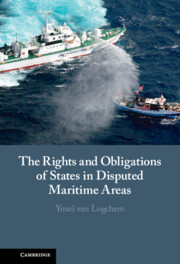Book contents
- The Rights and Obligations of States in Disputed Maritime Areas
- The Rights and Obligations of States in Disputed Maritime Areas
- Copyright page
- Contents
- Preface and Acknowledgements
- Cases
- Treaties and Legislation
- Abbreviations
- 1 Introduction
- 2 Disputed Maritime Areas: Setting the Scene
- 3 Disputed Maritime Areas: General Rules of International Law
- 4 Disputed Territorial Sea and Contiguous Zone Areas: Applicable Conventional Rules
- 5 Disputed EEZ and Continental Shelf Areas: Applicable Conventional Rules
- 6 Case Law Involving the Rights and Obligations of States in Disputed Maritime Areas
- 7 Disputed Waters Generated by Claims Made from Disputed Land Territory: What Are the Rights and Obligations of States?
- 8 Acts of Unilateralism in Disputed Maritime Areas: A Survey of State Practice
- 9 Are the Rights and Obligations of States in Disputed Maritime Areas Sufficiently Defined in International Law?
- Index
4 - Disputed Territorial Sea and Contiguous Zone Areas: Applicable Conventional Rules
Published online by Cambridge University Press: 01 October 2021
- The Rights and Obligations of States in Disputed Maritime Areas
- The Rights and Obligations of States in Disputed Maritime Areas
- Copyright page
- Contents
- Preface and Acknowledgements
- Cases
- Treaties and Legislation
- Abbreviations
- 1 Introduction
- 2 Disputed Maritime Areas: Setting the Scene
- 3 Disputed Maritime Areas: General Rules of International Law
- 4 Disputed Territorial Sea and Contiguous Zone Areas: Applicable Conventional Rules
- 5 Disputed EEZ and Continental Shelf Areas: Applicable Conventional Rules
- 6 Case Law Involving the Rights and Obligations of States in Disputed Maritime Areas
- 7 Disputed Waters Generated by Claims Made from Disputed Land Territory: What Are the Rights and Obligations of States?
- 8 Acts of Unilateralism in Disputed Maritime Areas: A Survey of State Practice
- 9 Are the Rights and Obligations of States in Disputed Maritime Areas Sufficiently Defined in International Law?
- Index
Summary
This chapter first appraises the rules of international law that are applicable to disputed territorial sea areas. Article 12 1958 CTS, whose wording is essentially repeated in Article 15 LOSC, provides as follows: historic titles and special circumstances allow States to extend their claim beyond the equidistance boundary; in the absence thereof, the equidistance boundary divides the area of overlapping territorial sea claims. At UNCLOS III, only limited debates occurred in relation to disputed territorial sea areas. As Article 15 LOSC is limited in its sphere of operation once a State invokes historic title or special circumstances, the following question arises: do other rules of international law exert their influence either alongside the interim rule contained in this provision; or when it is inapplicable, what alternative rules can be invoked as a substitute in disputed territorial sea areas? Disputed contiguous zones areas may arise outside the 12 nautical miles limit of the territorial sea. Whereas the issue of an interim rule for overlapping contiguous zone claims was addressed in Article 24(3) 1958 CTS, stipulating that the entitlements of States to a claimed contiguous zone would automatically extend up to the equidistance boundary, the LOSC abandoned this approach.
Keywords
- Type
- Chapter
- Information
- Publisher: Cambridge University PressPrint publication year: 2021



